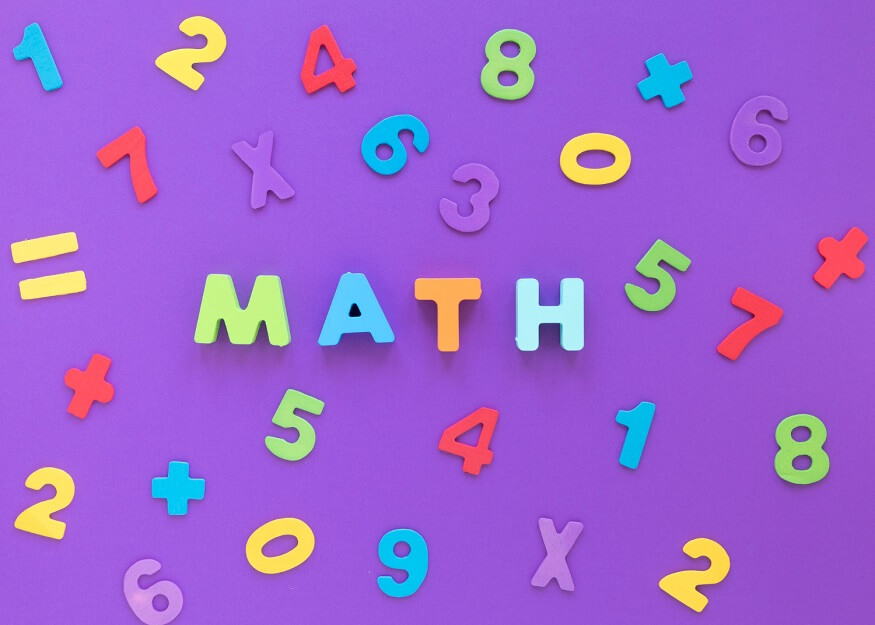Maths that a child knows before he or she starts kindergarten is highly predictive of how well that child will do later in school. Maths activities for preschoolers and Science activities for preschoolers can help children develop some basic cognitive skills that are useful and helpful in all subject areas. Most of the children’s mathematical development is dependent upon the environment. It is very important that as parents, one must interact with their children in a way to provide a rich vocabulary in mathematics and circumstantial to early grooming.
Children naturally come confident, parents can start playing kindergarten activities and science activities for preschoolers, and spend time conducting maths activities for preschoolers. Parents can start doing this almost from the very beginning. It starts from the basic things that children do in their day-to-day life. For instance, two siblings playing with 6 trains, noticing, or teaching them if they will be dividing the trains equally among themselves.
These activities for preschoolers are not simply workbooks and flashcards but developmentally appropriate activities. That really allows a child to play and have fun, making triangles out of pipes, jumping around a number line, building towers or roads with blocks. Parents can randomly start activities for preschoolers like, when in the car pointing out shapes and asking children to find as many triangles as they can, or how many sides does the stop sign have.
Also Read: Learn How to Memorise Multiplication Tables
Maths activities for preschoolers
There are various ways we can introduce mathematics to a child early on by inculcating play activities for preschoolers. In this blog are 15 Hands- On Math Activities for Preschoolers. These can be done at home as well as conducted as interactive kindergarten activities in the classroom. Hands on learning always helps your child to get engaged in a new and creative way. Hands-on learning is a multi-sensory for toddlers.
- Popsicle shapes: These kindergarten activities will take 3 popsicle sticks and divide it into three parts for one given shape. Divide one shape into three parts using three popsicle sticks, for example, three sticks for a circle and another three sticks for a rectangle divided equally into three parts. Fill each shape in a different colour for easier identification, for example, a circle will be coloured red, whereas a rectangle will be coloured green and so on. Mix all those popsicle sticks together and ask the toddler to join individual shapes together very similar to solving a puzzle. While solving the puzzle or after the puzzle is done, it is good to provide information to the kid regarding shapes and its sides and comparing similar shapes like a square or rectangle, circle or oval. Parents can ask kids questions like, ‘how many sides in a circle?’, ‘how many sides in a square?’, ‘which colour is the pentagon’, etc.
- Identify numbers: Draw circles with numbers on them and ask the toddler to put the exact number of beans or beads or some other small countable thing inside the circle. For example, in the circle with the number 2, the child should be able to put 2 beans. Similarly, the circle with 5, the child must put 5 beans.
- Count numbers: Draw small circles on a popsicle stick or on a paper for each number, for example, on one popsicle stick there could be 4 small circles or on a paper there could be 5 small circles. Ask the child to stick small circular stickers on the small circles, for example, if there are 4 small circles then small circular stickers, if there are 2 small circles then stick 2 small circular stickers on the piece of paper or on the popsicle stick.
- Numbers with blocks: Children can be asked to make a tower of blocks with a specified number, for example children can be asked to make a tower of 5 and then count the blocks and make a tower with only 5 blocks, similarly with 3 or 8.
- Number with cups: Each paper cup can be named or tagged as a number from 1 to 10 or even more. Then the child can be given coloured popsicle sticks to put in the cup, for example, a paper cup tagged as 6, the child will put 6 popsicle sticks into the cup, similarly with other numbers as well.
- Reused plastic bottle caps: Collect plastic bottle caps, name them after each number and draw same sized circles on a piece of paper and ask the toddler to match the cap to the circle on the paper.
- Pipe cleaners to count: Take a pipe cleaner and some colourful beads and ask the toddler to make each set or number into one round or circle, for example, one pipe cleaner will have 4 beads, whereas another would have 7 beads and so on.
- Paper cup pyramid: Give toddlers cups and ask them to make pyramids of 3 and 6 and more.
- Shape matching: You can get different colourful shapes to buy and ask the toddler to match the shapes to the one drawn on a piece of paper.
- Popsicle number sequence: Popsicle sticks can be tagged as a two or three numbered sequence, and then those sequences can be drawn on paper. Ask the toddler to match the sequence on the popsicle to the sequence on the paper.
- Cloth hanger to count: Small dresses can be cut out with different number of buttons on each dress, for example one dress has 2 buttons whereas other has 5 buttons. And kids can hang it on the cloth clip which has a number painted on it. The children can designate each dress to the cloth clip.
- Dice number addition: These dice games can be conducted as kindergarten activities. Parents or teachers can DIY or purchase dice which can help toddlers to perform and enhance their addition skills with two or three dice.
- Dice match numbers: Numbers can be cut out in different colours initially till six. Then kids can roll the die and then identify which number is showing on the dice by picking up or matching the number to the die.
- Paper cup dot match: Parents can tag cups with numbers from 1 to 9 in the form of numeric as well as dots. And arrange each numbered cup with its respective dotted cup.
- Missing Caterpillar number: Parents or teachers can draw caterpillars with circles in a sheet of paper. Each circle would have a number written on it except one of the circle’s being blank. Now cut out individual circles and name them the with numbers (mostly the missing numbers from the caterpillar’s body). Ask the toddler to identify the missing number and stick the missing number on the caterpillar.
Also Read: Number Names for Kids
At Euroschool, we vouch to focus on hands-on learning more than any other method. We involve each child to perform and engage in specially designed math activities for preschoolers which entertain as well as enhance their ability to do math. This also helps the students to have a healthy and likeable mentality towards math.










